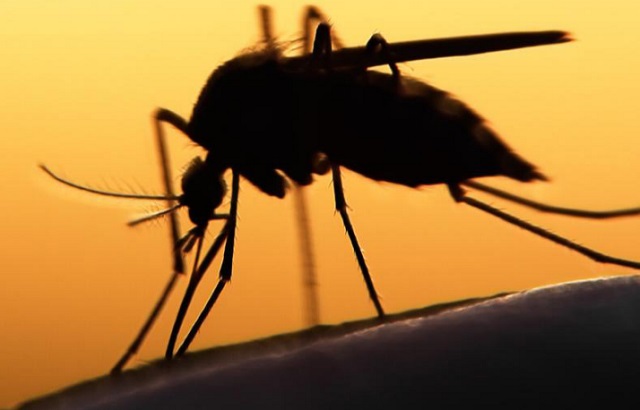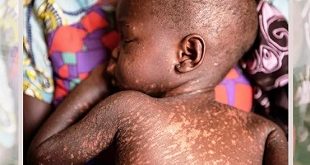
Kampala, Uganda | THE INDEPENDENT | A species of mosquito that can carry malaria known as Anopheles stephensi has invaded eastern Africa. Moina Spooner, from The Conversation Africa, in October 2020 asked Jeremy Herren and Clifford Mutero; scientists at the International Centre of Insect Physiology and Ecology in Nairobi, to provide insights into why this invasion is happening and what can be done to protect people.
How did Anopheles stephensi come to Africa?
This mosquito species, Anopheles stephensi, is widespread in South-East Asia and parts of the Arabian Peninsula. It is common in India, Pakistan, Iran, Iraq and Afghanistan. In the last couple of years there have been increasing reports of it in Africa. It was initially reported in Djibouti in 2013.
Recent reports indicate that it is spreading rapidly through the Horn of Africa. It was reported in Ethiopia in 2016 and in Sudan in 2017 and is likely being spread along major transportation routes. As a result, the World Health Organisation has issued an alert for intensified surveillance to track the spread. We expect that it’ll eventually be found in other major African cities. We speculate that three years is how long it would have taken to reach Kenya and Tanzania. They are now within that risky time-frame.
Kenya and Tanzania may be at a particularly high risk due to their close proximity to the Horn of Africa. They also have large coastal cities whose weather conditions (warmer and more humid) are similar to the mosquitoes’ native range. Other cities further away, including some in West Africa, are also deemed to have a suitable environment for Anopheles stephensi.
Generally the spread of mosquitoes to new areas is facilitated by people through ground, air and ocean transport systems. Increased international travel and human migration leads to vectors and pathogens emerging or re-emerging in regions where they’d diminished or been eradicated.
In what ways is this mosquito different from the ones that exist on the continent?
There are over 100 species of Anopheles mosquitoes in Africa, but only six species are considered “primary” vectors of malaria. Anopheles stephensi is very effective at transmitting malaria. What’s worrying is that it also thrives in urban areas, unlike the various African Anopheles species.
Typically, the main African Anopheles vector species are found in rural landscapes – which is why the majority of Africa’s malaria cases are also in rural areas. By contrast, while they can also survive in rural areas, Anopheles stephensi thrive in urban areas – in plastic and cement containers that hold water. This means that this species poses a threat both in cities and in rural areas.
What new challenges does it present?
The main issue is that if the invasion becomes widely established, malaria could become more prevalent in African cities and this would put many more people at risk of infection. Consequently, malaria control efforts will be spread even thinner on the continent as malaria expands into cities.
There are already many challenges such as a lack of resources. The funding shortfall is likely to grow if the Anopheles stephensi increases malaria cases in Africa.
Another major challenge is that both Anopheles stephensi and African malaria vectors are developing resistance to some of the insecticides used against them. Finally, the Anopheles stephensi presents a new challenge because it’s harder to access mosquito breeding and resting sites in urban areas and deploy control measures.
Has a mosquito invasion like this happened in the past? If so, what happened then?
The spread of Anopheles stephensi is reminiscent of a similar invasion by Anopheles gambiae, a mosquito species commonly found in Africa, which spread to Brazil in the 1930s and 1940s and caused devastating malaria outbreaks. For example, over a period of just eight months there were 150,000 cases of malaria and 14,000 deaths. This was recognised as one of the most serious threats to health in the Americas and an aggressive eradication campaign was initiated. The Brazilian government reacted with an integrated control programme. Insecticide spraying targeted larvae and adult insects. Cars or trucks leaving endemic areas were sprayed and there was a massive effort to improve drainage and remove the stagnant water that provided breeding sites. This concerted effort is an important example in successful vector control and resulted in the species being eradicated in South America by the 1940s.
Is there anything that can be done to stop the spread?
Action is needed immediately if there is to be a chance of curtailing the spread of Anopheles stephensi. The longer we leave it the harder it will be to contain, and unfortunately there seems to have already been significant spread with reports from across the Horn of Africa. Though mosquitoes can travel long distances and are dispersed on high altitude winds, the pattern of Anopheles stephensi spread suggests the importance of human transportation routes.
Vector surveillance is key. We need to know where Anopheles stephensi has spread and then quickly and strategically focus resources on restricting spread and locally eliminating Anopheles stephensi before it establishes a foothold. Surveillance should be carried out by National Vector and Malaria Control Programmes with support from research institutions.
Overall, a combination of environmental management to eliminate larval habitats and eco-friendly biopesticides to control adult and larval stages of the mosquito is considered the most effective strategy for control of Anopheles stephensi.
Other appropriate interventions include: use of long-lasting insecticide treated nets, screening of houses to stop entry by adult mosquitoes, proper covering of water storage containers to prevent mosquitoes from laying eggs in them, and removal of any unused water receptacles that may offer suitable breeding habitat to mosquitoes.
*****


Source: The Conversation
 The Independent Uganda: You get the Truth we Pay the Price
The Independent Uganda: You get the Truth we Pay the Price





